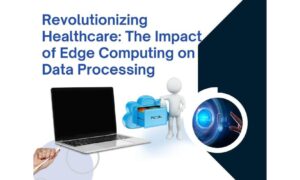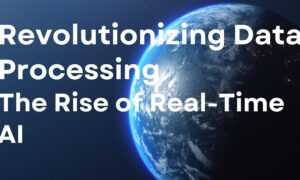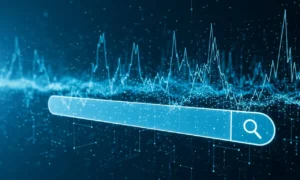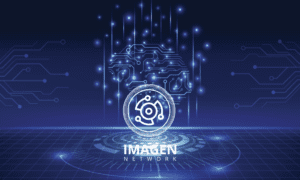In the ever-evolving landscape of technology, the year 2030 promises to be a pivotal point, marked by groundbreaking advancements and transformative trends. Among these, edge computing emerges as a key player, reshaping the way we process and utilize data. As we delve into the future, it becomes increasingly clear that the paradigm of data processing is shifting towards the edge, unlocking new possibilities and revolutionizing the technological landscape.
Introduction
Understanding Edge Computing:
At its core, edge computing refers to the decentralization of data processing. Unlike traditional cloud computing, where data is sent to a centralized server for analysis and processing, edge computing brings these operations closer to the source of data generation. This shift minimizes latency, enhances real-time processing capabilities, and reduces the burden on network bandwidth.
Shortening the Latency Gap:
One of the primary advantages of edge computing is its ability to significantly reduce latency. In an era where milliseconds matter, especially in applications like autonomous vehicles and augmented reality, the proximity of data processing becomes critical. Edge computing achieves this by processing data locally, near the device or sensor generating it. This not only ensures faster response times but also improves the overall efficiency of applications that rely on real-time data processing.
Enhanced Data Security:
In the age of cyber threats and data breaches, security is a paramount concern. Edge computing introduces a new layer of protection by processing sensitive data locally. As opposed to transmitting data to a centralized cloud server, where it might be more vulnerable to security breaches, edge computing keeps critical information closer to home. This localized approach adds an extra level of security, mitigating the risks associated with data in transit.
IoT Revolution:
The Internet of Things (IoT) is poised to play a pivotal role in the technological landscape of 2030. With an exponential increase in connected devices, from smart home appliances to industrial sensors, the demand for efficient data processing solutions has never been higher. Edge computing seamlessly aligns with the requirements of the IoT ecosystem, offering low-latency processing for the massive amounts of data generated by interconnected devices.
Realizing the Potential of 5G:
The widespread adoption of 5G technology is another key driver behind the rise of edge computing. The high-speed, low-latency capabilities of 5G networks complement the localized processing approach of edge computing. Together, they form a powerful synergy, enabling a new era of connectivity and paving the way for applications that demand instantaneous data processing and transfer.
Energy Efficiency and Sustainability:
As the global community increasingly focuses on sustainability, the energy efficiency of technological solutions becomes crucial. Edge computing, by processing data locally and minimizing the need for large-scale data centers, contributes to a more sustainable tech ecosystem. This decentralized approach not only reduces energy consumption but also minimizes the environmental impact associated with massive data centers.
Challenges on the Edge:
While the potential of edge computing is immense, it is not without its challenges. The distributed nature of edge computing introduces complexities in managing and securing a network of disparate computing nodes. Furthermore, standardization and interoperability remain areas that require attention to ensure seamless integration of edge computing solutions across diverse platforms and applications.
The Evolution of Edge Devices:
In the landscape of 2030, edge devices are set to evolve rapidly. From smart sensors and cameras to edge servers, these devices will become increasingly sophisticated, capable of handling complex processing tasks at the edge. This evolution is not only driven by the demand for enhanced computing capabilities but also by the need for more intelligence at the edge to support a wide array of applications.
Transitioning Towards the Edge:
The transition towards edge computing is not just a technological shift but a paradigm change in how we approach data processing. Companies and industries across the board are recognizing the benefits of edge computing and incorporating it into their strategies. As edge computing becomes more prevalent, we can expect a gradual migration away from purely centralized cloud architectures towards a hybrid model that leverages the strengths of both edge and cloud computing.
SEO Optimization for Edge Computing:
In the realm of search engine optimization (SEO), understanding the key terms and trends associated with edge computing is crucial. Incorporating relevant keywords such as “edge computing,” “data processing,” and “technology trends 2030” strategically throughout the content ensures that the article is easily discoverable by individuals seeking insights into this transformative technology. Additionally, providing in-depth and valuable information on the topic establishes the article as a reliable source, further enhancing its SEO performance.
Conclusion:
As we stand on the cusp of 2030, the trajectory of technology is undeniably shaped by the paradigm of edge computing. This transformative approach to data processing not only addresses the challenges of latency and security but also aligns seamlessly with the evolving landscape of IoT and 5G. The journey towards the edge is not without its obstacles, but the promises of enhanced efficiency, sustainability, and real-time capabilities make it a journey worth taking. As industries embrace this shift, the redefinition of data processing heralds a new era of technological possibilities, setting the stage for a future where the edge is not just a location but a cornerstone of innovation.



































